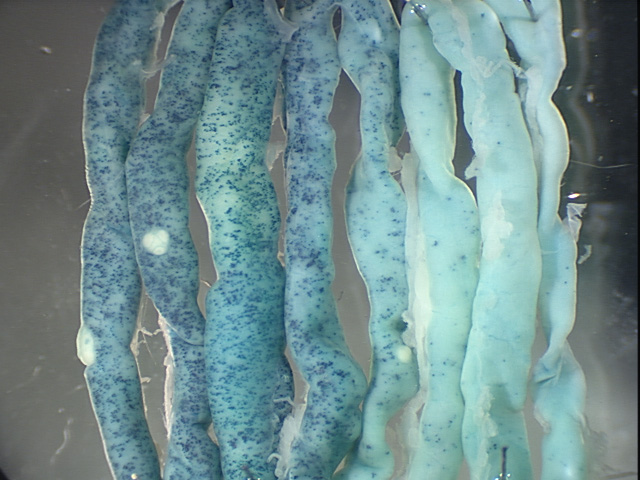
**Embargoed by Nature Genetics for release at 11 a.m. MDT Sunday, June 8, 2008**
This magnified image of a mouse intestine that has been laid out back and forth, with the upper end of the intestine at the left and the lower end at the right. Adult intestinal stem cells, labeled with blue dye attached to a gene named Bmi1, are responsible for creating and maintaining other kinds of cells that line the intestine. It is apparent adult stem cells are most common in the upper intestine at left and less abundant in the middle and lower intestine, center and right. That suggests there may be more than one type of adult stem cell operating in the intestine and perhaps in other organs, complicating efforts to use the cells to treat disease, according to a University of Utah study.
